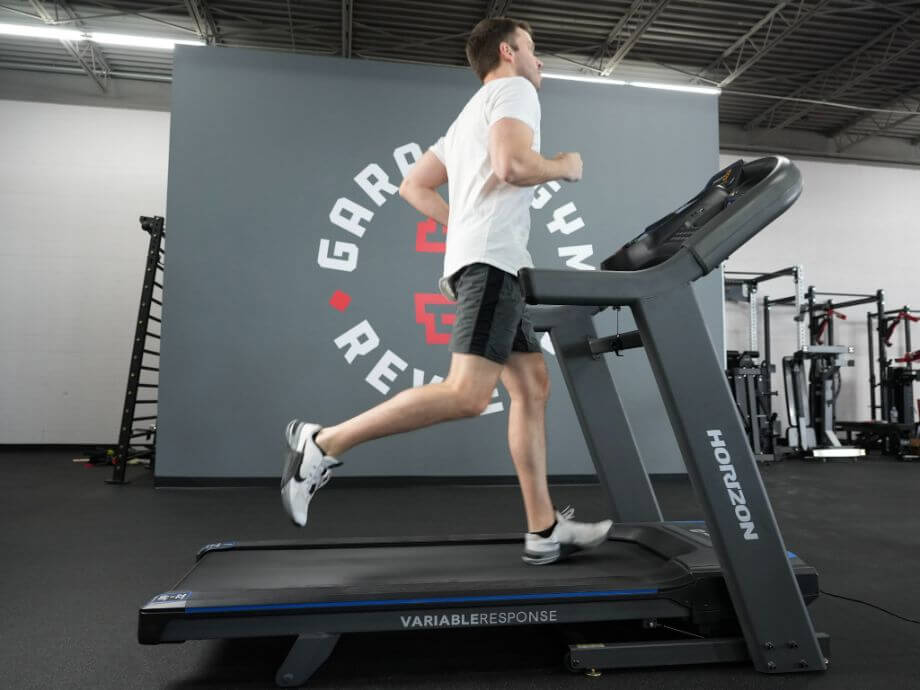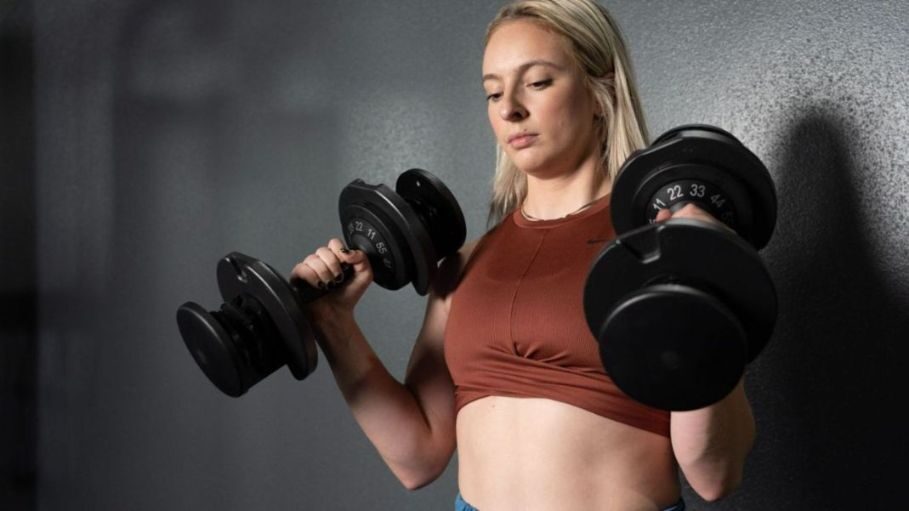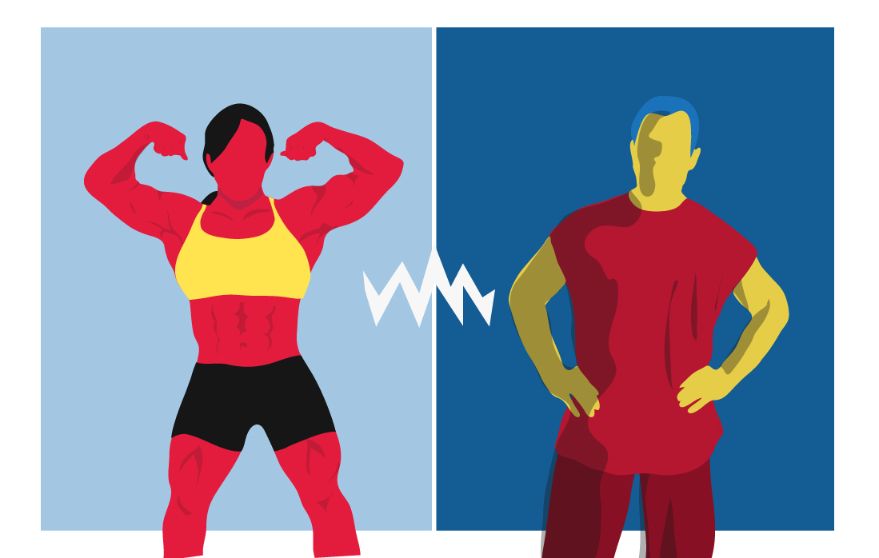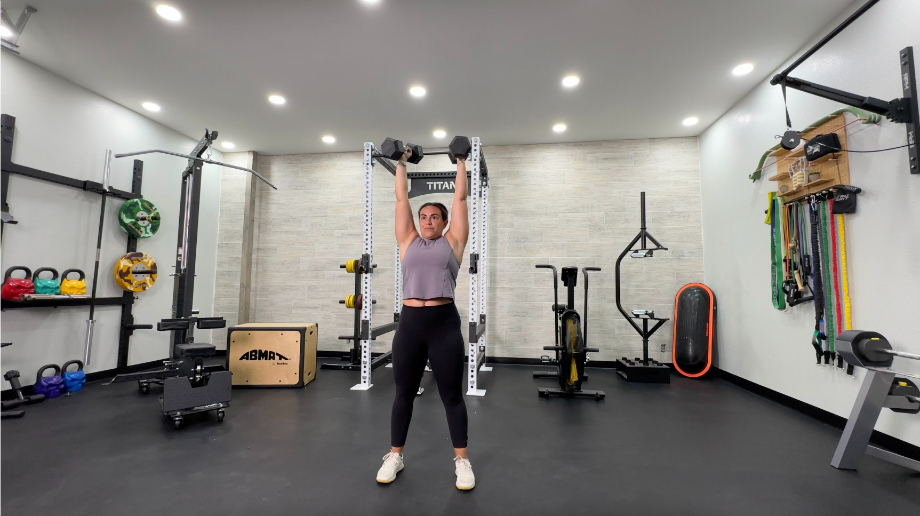We test and review fitness products based on an independent, multi-point methodology. If you use our links to purchase something, we may earn a commission. Read our disclosures.
If you’re struggling to shed fat and gain muscle, you’re not alone. It takes time to lose body fat, and many factors affect how quickly progress happens. Your lifestyle, exercise habits, sleep quality, access to medical care, and access to fitness information and equipment can all impact your ability to transform your body and the type of fat you carry. At the most basic level, you want to change your energy expenditure to reduce calorie intake and increase net calories burned.
I’m a certified personal trainer as well as a certified nutrition coach through the National Academy of Sports Medicine (NASM). I have years of experience helping my clients lower their body fat percentages, lose weight, and build muscle tone. Let’s dive into how to lose body fat the right way.
Medical disclaimer: This article is intended for educational and informational purposes only. It is not a substitute for health or medical advice. For medical advice, contact an appropriate healthcare provider.
Why Is Body Fat Important?
Body fat, or adipose tissue, often gets vilified. However, your body needs fat storage to keep you warm, transport vitamins A, D, E, and K, cushion your vital organs, provide energy, and maintain a healthy reproductive system. It’s also a good health indicator.
Body mass index (BMI) is used by many to check overall health. But when we’re talking about how to lose overall body fat, your body fat percentage is also a more accurate indicator of your fitness than standing on a scale. Some very thin people have a high percentage of body fat, whereas some athletes have a body weight that’s well over average for their height, but their body fat percentage is much lower than average.
You can also use your body fat percentage along with a scale and BMI to create a better complete health picture. If you’ve lost 10 pounds, for example, and your body fat percentage hasn’t changed, you may have lost muscle instead of fat. You can experience weight gain due to increased muscle mass while lowering your body fat percentage.
How to Measure Body Fat
There are many ways to measure body fat, including bioelectrical impedance analysis (BIA), hydrostatic underwater weighing, and skinfold measurements. BIA and hydrostatic weighing require specialized equipment that’s difficult and expensive to come by for most people.
There are scales and handheld devices that offer BIA, which uses electrical currents to measure body fat, but those made for the mass market aren’t particularly accurate. Changes in hydration, whether that’s water loss or retention, can skew results, too. If you use a scale or handheld BIA device, try to keep conditions the same each time you use it to get more consistent results.
In general, skinfold measurements using body fat calipers are one of the easiest ways to measure and track your body fat percentage. The calipers are used to take measurements in specific areas of the body. Then, you calculate your body fat based on those measurements. There are different measurement and calculation methods, including the Jackson & Pollock seven-site, four-site, or three-site methods, or the four-site Durnin & Womersley method. I prefer the Jackson & Pollock three-site method because it’s the easiest to do at home.
Once you’ve picked a method, stick with it because each method will produce different results. Skinfold measurements will give you an idea—though not an exact look—at your body fat percentage. What you really want is to track the change in the numbers from week to week rather than the numbers themselves. Here are a few tips for measuring body fat using calipers:
- Take two measurements at each site
- Don’t take measurements right after you exercise
- Have a professional (personal trainer or dietician) show you how and where to take measurements if you’ve never done it before
- Use the same method every time
- Focus on the change in numbers rather than the numbers themselves
Strength Training vs Cardio
You might hear some trainers push strength training over cardio when discussing how to reduce body fat. The truth is that you need both for overall health. Currently, the Centers for Disease Control and Prevention (CDC) recommends 300 minutes of moderate-intensity physical activity per week for fat loss, and I suggest a mix of cardio and strength training to maximize your results.
Benefits of Cardio
Cardiorespiratory fitness, also known as cardio or aerobic exercise, improves the functioning of your cardiovascular system, namely your heart and lungs. Cardio improves the efficient use of oxygen within your body, increasing your ability to work.
Any exercise that raises your heart and breathing rate and improves how your circulatory system, lungs, and heart function is considered cardio. Traditional cardio usually includes activities like running, swimming, dancing, and cycling. However, it’s more about how you do the activity than the activity itself. Everyday activities like yard work or walking up the stairs to your office can turn into cardio if you do it with enough intensity.
RELATED: HIIT Bike Workout

If you’re looking for a quick, high-fat burning form of cardio, high-intensity interval training (HIIT) is it. A 2017 meta-analysis in which 39 studies were reviewed found that HIIT training can decrease abdominal and visceral fat (belly fat) while improving cardiorespiratory health in less workout time. (Belly fat has been linked to heart disease, so you’re lowering your risk there, too.)
RELATED: HIIT Rowing Workout
HIIT workouts use short bursts (80 to 90 percent of your maximum heart rate) of high-intensity effort that are typically around 45 seconds long, followed by a short 10- to 15-second rest period before starting the next high-intensity interval. It maximizes calorie burn in a minimal amount of time. HIIT workouts should be relatively short, around 15 to 20 minutes.
Benefits of Strength Training
You can’t ignore strength training if you want to lose body fat. Strength and resistance training increase lean muscle, which burns more calories pound for pound than fat. Consequently, the more lean muscle mass you have, the more calories you burn while you sleep, walk, work, or sit on the couch.
Most people think of bodybuilding with bench pressing, deadlifts, and squats, which are excellent forms of weight training. But, there are many ways to build muscle as part of a healthy weight loss program. Bodyweight exercises, resistance bands, kettlebells, cable machines, and dumbbells can all be used.

Ideally, you should strength train at least two or three days a week to gain enough muscle to burn extra calories. It takes at least that many days per week to learn technique and develop proper form, too.
Circuit training is a type of strength training that gets and keeps your heart rate up enough to push into cardio territory. Each circuit consists of four to eight strength exercises like push-ups, tricep extensions, or overhead presses performed for 45 to 60 seconds each with no rest in between each exercise. Rest for 90 to 120 seconds between each of three to five circuits.
NEAT
When it comes to reducing body fat percentage, you can’t ignore non-exercise activity thermogenesis, or NEAT. NEAT are the calories you burn from activities that aren’t structured exercise, from fidgeting your fingers to bouncing your knee. Most of the calories you burn in a day come from NEAT, even if you work out very frequently.
Low NEAT rates often go hand in hand with higher body fat percentages. However, NEAT rates vary widely based on your job and habits. Some people naturally have high NEAT rates because they have difficulty sitting still.
You can increase your NEAT by looking for ways to add movement to your day. Consider:
- Taking the stairs instead of the elevator
- Parking farther from the grocery store entrance
- Standing instead of sitting at the office
- Walking to talk to a co-worker instead of emailing or calling
Nutrition
You can’t outwork a bad diet, which makes nutrition a vital part of losing body fat. Every body and situation are different, so it’s best to consult a professional when determining your individual nutrition needs. There are different levels of nutritional experts, ranging from nutrition coaches to physician nutrition specialists, so consider how much help you need.
- Physician Nutrition Specialist: A physician nutrition specialist is a board-certified physician specializing in nutrition, cardio-metabolic diseases, obesity, and other nutrition-related illness and disorders.
- Registered Dietitian Nutritionist (RDN): An RDN undergoes extensive training and education (bachelor’s or master’s degree) to pass the Commission on Dietetic Registration (CDR) exam. They counsel, advocate for, and use their knowledge to help people make better nutrition choices.
- Nutrition Coach: The term nutrition coach isn’t regulated, which means anyone can call themselves a nutrition coach. I’m a NASM-certified nutrition coach myself. I had to learn about energy balance, energy transfer, fat loss, digestion, hydration, macronutrients, and dozens of other factors that affect nutrition. Nutrition coaches educate their clients and help them set and support their clients’ nutrition and health goals.
A healthy diet based on fresh vegetables and fruits, lean meats, whole grains, and healthy fats (like those found in nuts, fish, avocados, and seeds) provides the maximum number of calories from nutrient-dense food, skipping empty calories. You can further a healthy body and reduce body fat by:
- Limiting your sugar intake (check labels for added sugars)
- Skipping sodas and sugary drinks
- Limiting alcohol intake
- Drinking more water
- Eating high protein meals and snacks
- Choosing complex carbs over processed ones
- Getting adequate fiber
- Avoiding prepackaged foods
Healthy vs Unhealthy Body Fat Percentage
Your age, gender, ethnicity, and cultural norms all influence and affect your body fat. For example, an older 2000 study found that people from Japan tend to have lower body fat percentages than White or Black Americans, and men tend to gain more body fat than women as they age even though women have a higher body fat percentage overall.
How you measure your body fat and who measures your body fat can affect your results, too. Aim for consistency. Look at the changes in numbers rather than the numbers themselves.
Healthy body fat percentages for men:
- Age 20-39: 8% to 19%
- Age 40-59: 11% to 21%
- Age 60-79: 13% to 24%
Healthy body fat percentages for women:
- Age 20 to 39: 21% to 32%
- Age 40 to 59: 23% to 33%
- Age 60 to 79: 24% to 35%
Sleep
A number of studies have linked poor sleep duration and quality with higher body fat percentages. Lack of sleep increases hunger hormones and reduces satiety hormones, leaving you vulnerable to overeating. Poor sleep can also make you less motivated and energized for your workouts. Your efforts to lose body fat will be more successful if you:
- Get seven to nine hours of sleep
- Go to bed at the same time every day
- Wake up at the same time every day
- Follow a bedtime routine to help your brain and body relax

Final Thoughts on How to Lose Body Fat
Many people are simply looking for how to lose body fat and gain muscle. The bottom line is, you must create a caloric deficit while maintaining or gaining lean muscle mass. You can do that by:
- Participating in 300 minutes (five hours) of moderate-intensity activities per week
- Strength training two to three days per week
- Eating a healthy diet of fresh fruits and vegetables, lean meats, and healthy fats
- Avoiding sugar, soft drinks, and prepackaged foods
How to Lose Body Fat Q&A
How can you lose body fat quickly?
High-intensity interval training (HIIT) is one of the best ways to burn calories and body fat in a short amount of time. These condensed workouts provide similar results to longer lower-intensity workouts. Strength training is also vital to losing body fat quickly. The more muscle you have, the more non-exercise activity thermogenesis (NEAT) calories you burn.
RELATED: HIIT Elliptical Workout
What burns fat the fastest?
If you want to get rid of fat fast, HIIT offers an efficient fat-burning workout. Activities that engage your entire body like mountain climbers, burpees, and plank jacks used within a HIIT workout format can potentially burn even more calories. You burn more energy at higher intensities. However, you have to balance high-intensity workouts with easier, low-intensity workouts to avoid injury and burnout.
How long does it take to lose five percent body fat?
The time it takes to lose five percent of your body fat mass depends on your gender, metabolic rate, weight, size, access to fitness equipment, dedication to nutrition and exercise, and many other factors. Consequently, you can’t necessarily predict how long it will take to lose body fat. However, with effort and consistency, you can improve your body composition over time.
What burns body fat the most?
HIIT is an effective, efficient fat-burning training method for weight management. However, cardio and strength training together effectively burn fat when used with a healthy diet.
Further reading

Looking for a convenient high-protein snack? Check out our list of the best protein bars for women! Read more

Our experts ranked the best glute machines to get your backside in shape this year. Read more

We go over the performance, specs, and workout experience of this all-new machine in our NordicTrack T Series 10 treadmill review. Read more

Build up your lats and back with our list of the best lat pulldown machines. Read more

